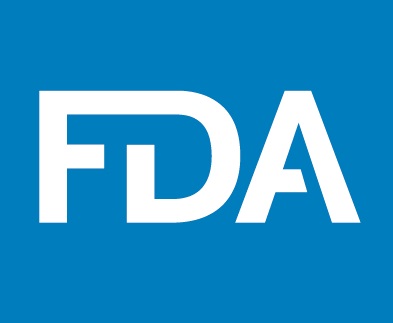PEPFAR: FDA Approves 200th HIV/AIDS Therapy
Topics

Cross-posted from FDA Voice Blog, December 1, 2017
Since 1981, when the first case of AIDS was reported in this country, U.S. and foreign governments, scientists, grassroots and global community health organizations, patients, and their families have worked hard to address the impact of this virus.
HIV/AIDS is responsible for one of the most destructive pandemics in human history.
World AIDS Day is a time for us to honor the 36 million people who have died from AIDS and HIV infections, to rededicate ourselves to helping the more than 35 million people living with HIV/AIDS today, and to pay tribute to the caregivers, families, and communities who support them.
As we contemplate the enormity of these numbers and the far-reaching impact of AIDS and HIV on our world, we can also take some heart at efforts to combat the disease, through the development of more effective treatments, and efforts to expand access to these therapies.
The men and women of FDA remain dedicated to these efforts as a core part of our mission.
Earlier this week, FDA approved – or tentatively approved – the 200th antiretroviral drug application, including 30 solid formulations specific for children, under the President’s Emergency Plan for AIDS Relief (PEPFAR). The plan was launched in 2003 to address the global HIV/AIDS epidemic by stimulating the development of new HIV therapies, many of which were new combinations of generic medicines and were purchased with American funds at low cost, to expand opportunities in countries that lacked good access to treatment.
To implement the goals of PEPFAR, FDA used its expedited review process to provide review of life-saving antiretroviral drugs produced by manufacturers all over the world. Through guidance and an active outreach program to the pharmaceutical industry, FDA encouraged sponsors worldwide to submit U.S. marketing applications for single entity, fixed dose combination (FDC), and co-packaged versions of previously approved antiretroviral therapies. These new drugs were typically combinations of medicines that were being combined or packaged together to make their administration easier. FDA worked closely with manufacturers who had not interacted with FDA previously to help them develop an FDA application and to prepare for the requisite FDA inspections of their manufacturing facilities.
By combining medicines into once a day pills, or co-packaging drugs, it helped facilitate treatment in areas of the world, particularly in parts of Africa that lacked advanced health care infrastructure, and where a one-pill-once-a-day regimen helped expand access to treatment.
Under the program, these fixed dose combination drugs could be fashioned even in circumstances where there was still patent or exclusivity market protection for one or more of the components in the U.S. The sponsors agreed not to assert their patent rights, so long as the drugs were sold in markets that lacked the resources to otherwise make these drugs available. In recent years, subsequent legislation applied updated classifications for speed of review.
The process enabled developing markets that were hard hit by the virus to get more widespread access to effective treatments tailored to their health care needs, while making sure that these products underwent FDA evaluation and met the agency’s gold standard for safety, efficacy, and quality. These products could then be purchased with U.S. funds under the President’s PEPFAR Fund. Due to the significant public health impact of these products, FDA prioritized the review of these marketing submissions.
Over the years, FDA’s scientific and regulatory contributions have helped the U.S. respond with compassion and effectiveness to the needs of those who are living with AIDS throughout the world, including many children who face unique challenges getting appropriate treatments.
Since October 2016, the most recent date for which numbers are available, the PEPFAR program has provided life-saving antiretroviral (ARVs) treatment for nearly 11.5 million people in its global efforts to battle the HIV/AIDS epidemic. The FDCs helped enable more widespread treatment.
PEPFAR also has supported collaboration by FDA and HHS with the Department of State Office of the Global AIDS Coordinator; the United States Agency for International Development; the World Health Organization; the Global Fund to Fight AIDS Tuberculosis, and Malaria; and other organizations that help countries build and strengthen their health care systems and regulatory capacities.
This country’s response to the global HIV/AIDS crisis, through programs like PEPFAR, and through the dedicated work of both global and country partners, has created an opportunity to change the course of the HIV/AIDS pandemic, with a potential end to it as a public health threat firmly in sight. We are working to seize this opportunity.
The PEPFAR Strategy for Accelerating HIV/AIDS Epidemic Control (2017-2020) [PDF, 2.86 MB] (“Epidemic Control Strategy”), released in September, sets a bold course for achieving control of the HIV/AIDS epidemic by the end of 2020 in 13 countries which represent the most vulnerable communities to HIV/AIDs.
This will be accomplished in partnership with and through attainment of Joint United Nations Programme on HIV/AIDS 90-90-90 framework – in which 90% of people living with HIV will know their status, 90% of people who know their status are accessing treatment, and 90% of people on treatment have suppressed viral loads – and an expansion of HIV prevention.
FDA remains fully committed to these efforts. By working closely with other governments and public and private agencies and organizations, we can build on the impact and success of the life-saving PEPFAR program, expanding transparency, accountability, and partnership, so that the world can finally overcome one of the most devastating public health challenges in history.